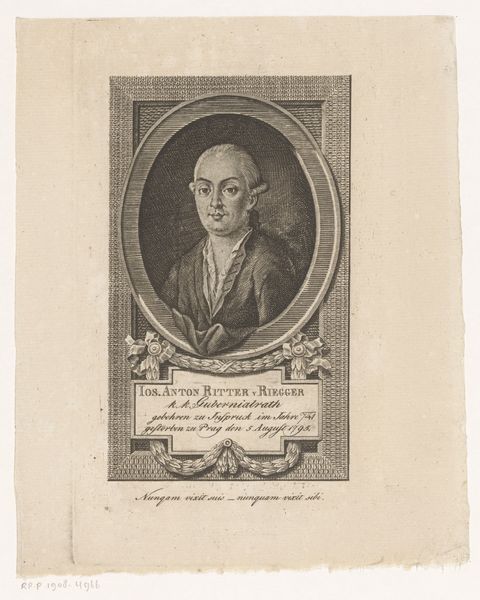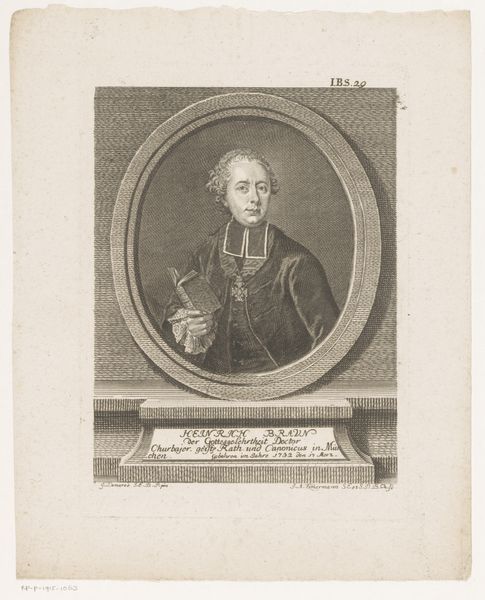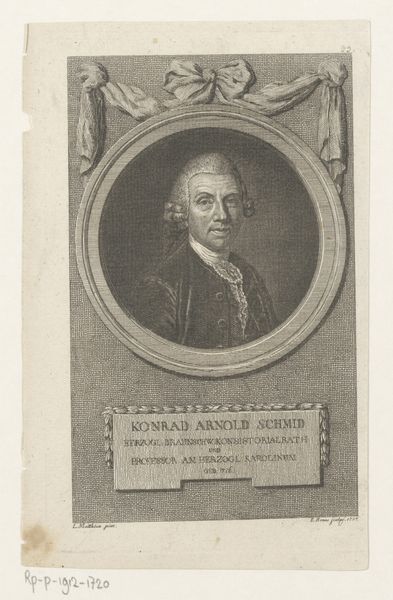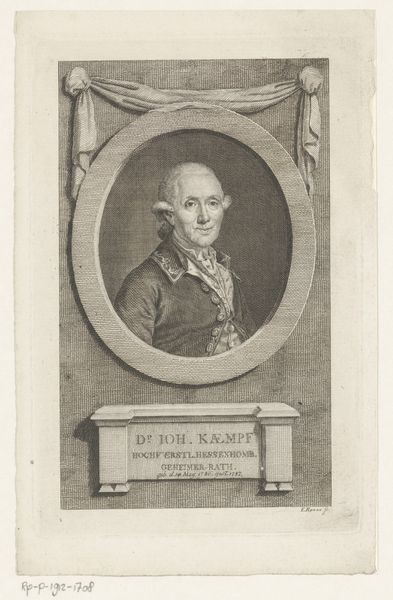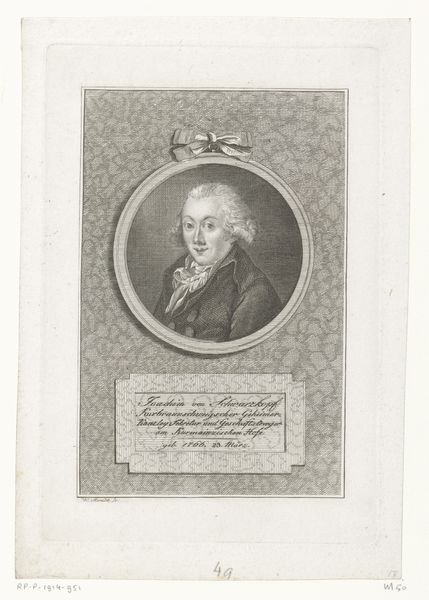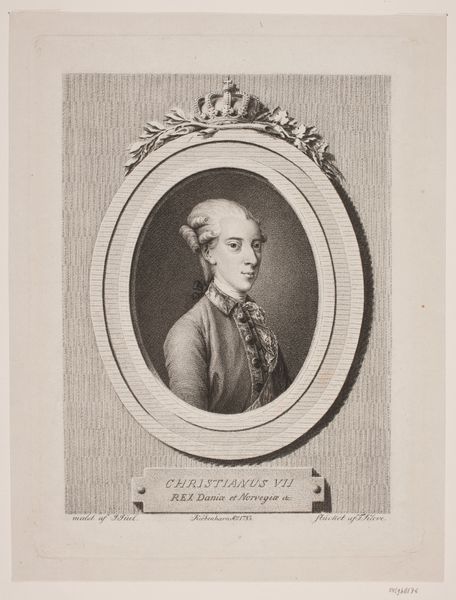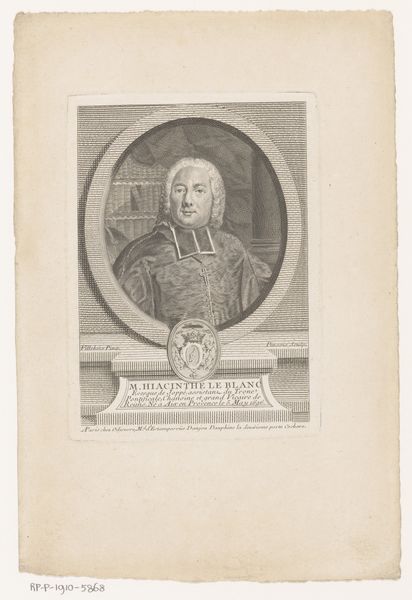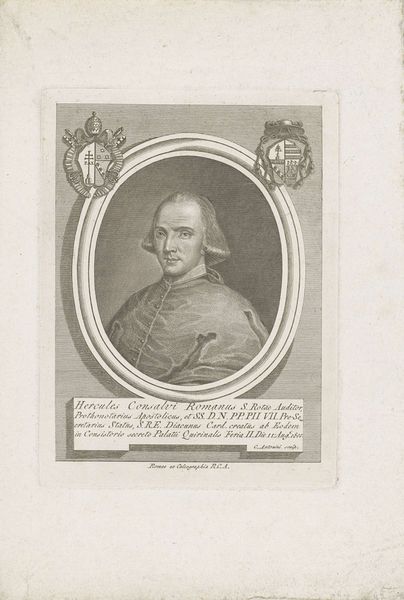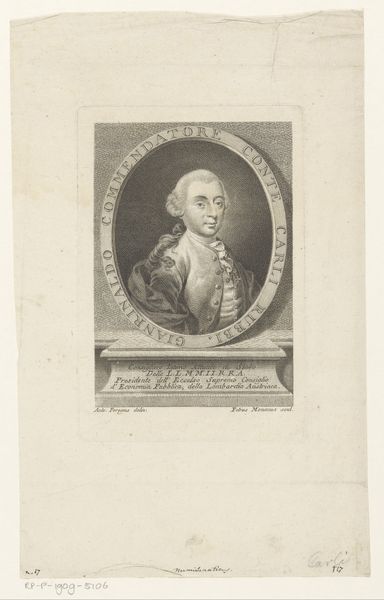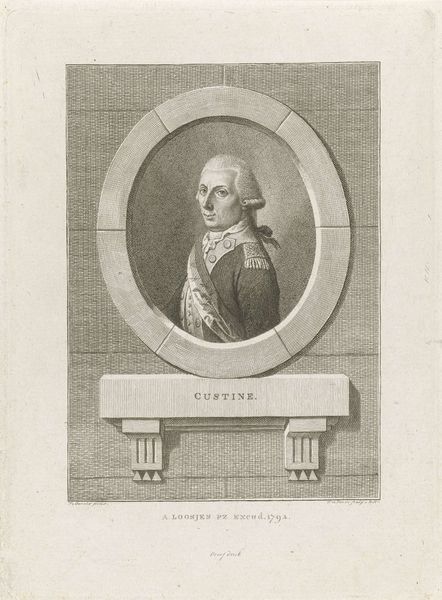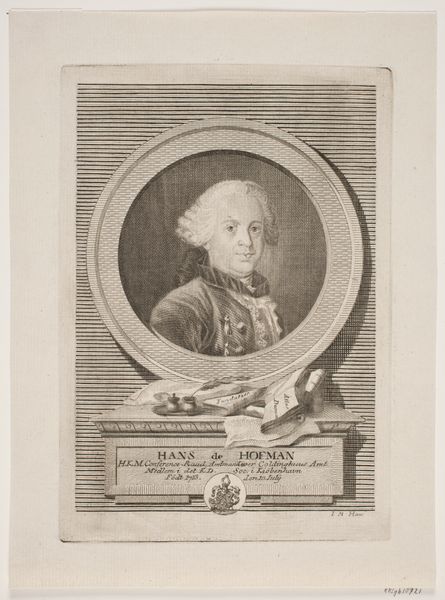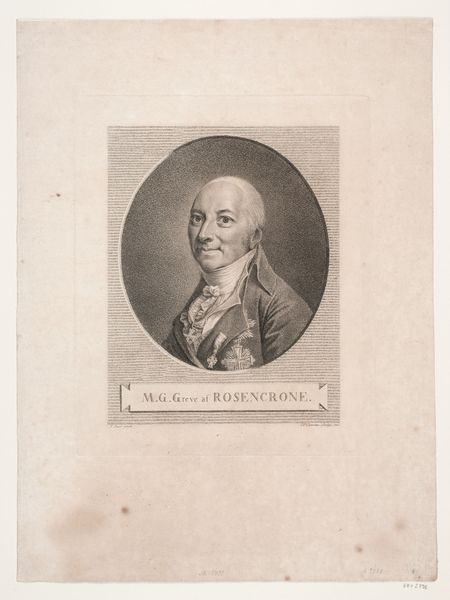
Terkel Kleve made this engraving of Gerhard Schoning sometime in the late 18th century. The medium is deceptively simple: lines incised into a metal plate, which is then inked and printed onto paper. Consider the labor involved. Every tiny stroke had to be carefully carved by hand. The effect is a meticulous rendering of Schoning’s features, clothing, and even his expression. Look closely, and you’ll notice how the density of lines creates subtle gradations of light and shadow. It’s a testament to the engraver’s skill, built up by a long apprenticeship. Engravings like this were not just artworks, they were vehicles of information. They circulated images of important people, disseminating power through the very act of reproduction. So, while the print might seem like a straightforward portrait, it's also a window onto the labor, skill, and social function of printmaking in the 1700s. It reminds us that even the most seemingly simple images are the product of complex social and economic forces.
Comments
No comments
Be the first to comment and join the conversation on the ultimate creative platform.

